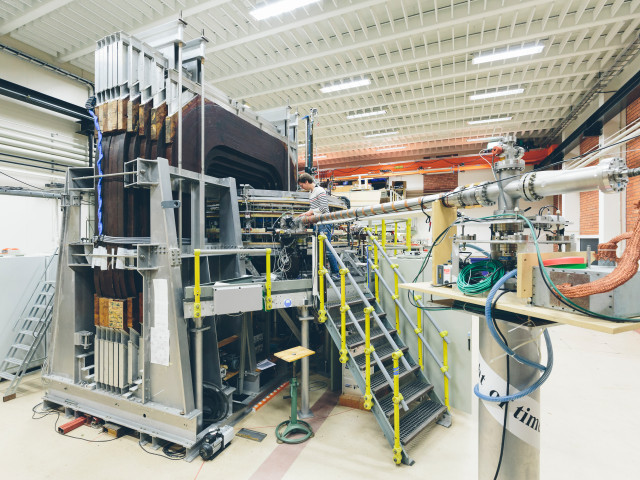- The interaction of electromagnetic and particle radiation with matter
- Energy Loss Mechanisms and Spectrum Formation. Measurement Statistics.
- Basic principles of Detectors for Ionizing Radiation
- Semiconductor Detectors (and ionization chambers)
- Scintillation detectors, Photomultipliers and Photodiodes
- Gaseous Detectors
- Position Sensitive Detectors
- Detectors for Weakly Ionizing Radiation
- Signal Formation, Electronic noise and Optimization of Signal-to-Noise Ratio
- Pulse Processing Electronics, Amplification, Pulse Shaping and Digitization
- Timing and Lifetime Measurements
- Development of a Detector System Concept
- Overview of Applications of Nuclear and Particle Physics
- Radiation Detectors for Medical Imaging
- Nuclear Techniques for Material Analysis
- Systems for Nuclear Safeguards, Public Security and Environmental Monitoring
SH2306 Experimental Techniques for Nuclear and Particle Physics 8.0 credits

Information per course offering
Information for Autumn 2025 Start 25 Aug 2025 programme students
- Course location
AlbaNova
- Duration
- 25 Aug 2025 - 24 Oct 2025
- Periods
Autumn 2025: P1 (8 hp)
- Pace of study
67%
- Application code
51388
- Form of study
Normal Daytime
- Language of instruction
English
- Course memo
- Course memo is not published
- Number of places
Places are not limited
- Target group
- CTFYS, TTFYM
- Planned modular schedule
- P1: G2. P2: G1, I1.
- Schedule
Contact
Course syllabus as PDF
Please note: all information from the Course syllabus is available on this page in an accessible format.
Course syllabus SH2306 (Spring 2022–)Content and learning outcomes
Course contents
Intended learning outcomes
The course aims to provide the students with an understanding of basic radiation detection techniques for nuclear and particle physics and their applications in other fields of science, medicine and industry. After completion of the course the student should be able to:
- Describe the basic interaction mechanisms relevant for radiation detectors and explain their importance for detecting various types of ionizing radiation at different energies.
- Describe the properties of the most common types of detector materials, the working principles behind detectors based on these materials and their characteristic properties with respect to energy resolution, efficiency etc.
- Apply the knowledge about radiation interactions and detector principles to choose the most suitable type of detector for a given detection task.
- Select the appropriate electronics building blocks needed for a certain detector system and explain their function.
- Describe common sources of noise in radiation detection, their origin and how they can be minimized.
- Explain the limiting factors to the energy and time resolution of a detector system.
- Design a radiation detection system, including its basic electronics building blocks, and use it in the laboratory.
- Compile information from one’s own work and from the scientific literature into a written report and an oral presentation.
Literature and preparations
Specific prerequisites
English B / English 6
Recommended prerequisites
Recommended prerequisites: Previous knowledge of basic atomic, nuclear, particle and solid state physics corresponding Modern Physics. The course is intended for students that have completed around 3 years of physics or engineering physics (i.e. are at the Master level) or are engaged in studies at the graduate level.
Literature
Examination and completion
Grading scale
Examination
- TEN1 - Examination, 6.0 credits, grading scale: A, B, C, D, E, FX, F
- LAB1 - Laboratory Work, 2.0 credits, grading scale: P, F
Based on recommendation from KTH’s coordinator for disabilities, the examiner will decide how to adapt an examination for students with documented disability.
The examiner may apply another examination format when re-examining individual students.
If the course is discontinued, students may request to be examined during the following two academic years.
Other requirements for final grade
One written examination (TEN1; 6 university credits).
Laboratory project work with a written report and an oral presentation (LAB1; 2 university credits).
Examiner
Ethical approach
- All members of a group are responsible for the group's work.
- In any assessment, every student shall honestly disclose any help received and sources used.
- In an oral assessment, every student shall be able to present and answer questions about the entire assignment and solution.